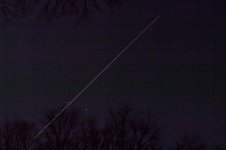alphan
Well-known member
From personal experience and hearsay, can we have a discussion on the most suitable camera for our purpose. We can even update as we go along. The more common criteria would include image size (Mp), focus points, VF and LCD performance, ISO, shooting rate, build quality, image IQ, features, etc. I am using a Sony A550 the last 18 months and here's my experience.
Pro:
High ISO performance
Light and compact (compared to other similar)
Slightly cheaper than other major brand with similar class
High continuous shooting rate
Cons:
Build quality are lower (even my shutter button are failing after about only 20,000 clicks
VF gets quite dark with 80ED + 2X TN
shutter noise loud
Metering poor (spot mode)
According to an ex-senior Sony guy, Sony camera are more designed for limited life. An entry level camera would last 18-24 months, the mid level 24-30 months and higher level ones 36 months before major problems started and you just need to get new ones. Failure would occur earlier for those shooting more.
How does Sony's usually higher MP's translate with higher cropping as in bird photography? Thinking of going the A65/77 way to overcome the darker VF but with 7X and 14X magnifier in EVF, the view quality are poorer. LCD would always be a problem outdoor. Perhaps the Nikon and Canon users can put more light into this perspective.
Pro:
High ISO performance
Light and compact (compared to other similar)
Slightly cheaper than other major brand with similar class
High continuous shooting rate
Cons:
Build quality are lower (even my shutter button are failing after about only 20,000 clicks
VF gets quite dark with 80ED + 2X TN
shutter noise loud
Metering poor (spot mode)
According to an ex-senior Sony guy, Sony camera are more designed for limited life. An entry level camera would last 18-24 months, the mid level 24-30 months and higher level ones 36 months before major problems started and you just need to get new ones. Failure would occur earlier for those shooting more.
How does Sony's usually higher MP's translate with higher cropping as in bird photography? Thinking of going the A65/77 way to overcome the darker VF but with 7X and 14X magnifier in EVF, the view quality are poorer. LCD would always be a problem outdoor. Perhaps the Nikon and Canon users can put more light into this perspective.




